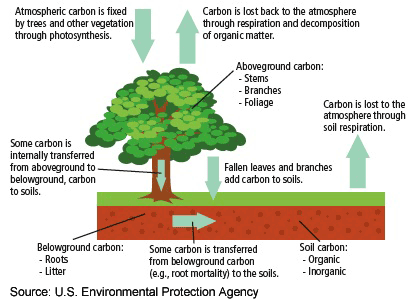Reforestation: Impact on Climate
128,103 Views
11,825 Questions Answered
Let’s Begin…
Humans are clearing Earth's forests to make way for development, agriculture, and other uses - this can have severe consequences for our environment. Learn the value of large-scale forest landscapes and their role in the carbon cycle. Discover how reforestation can impact climate change by decreasing carbon dioxide in the atmosphere. What is your role in helping to keep nature strong?
Additional Resources for you to Explore
The quickest solution to deforestation would be to simply stop cutting down trees or to manage forest resources. Reforestation efforts are a vital way to undo some of the damage that has already been done.Reforestation has many positive effects on the environment. One of the most dramatic impacts is an increase of habitat for millions of organisms. Adding trees allows the forest to expand its canopy, which blocks the sun’s rays during the day and holds in warm air at night. Forest soils are moist, and protection by sun-blocking tree cover keeps them from drying out. Without this coverage plants and animals would experience extreme temperature swings that could be harmful. Reforestation also impacts climate change. Trees play an important role in absorbing the greenhouse gas, carbon dioxide, that fuels global climate change - this is called carbon sequestration. Greenhouse gases trap heat from the sun in Earth's atmosphere, which can lead to global climate change. Adding trees can reduce the amount of carbon dioxide in the atmosphere.

Carbon sequestration happens because trees need carbon dioxide to conduct photosynthesis. Trees take in carbon dioxide and store or sequester it in roots, leaves, stems, and branches and then break it down during photosynthesis to make sugars for food. A healthy tree can absorb as much as 48 pounds of carbon dioxide per year and can store up to 1 ton by the time it reaches forty years of age! Trees do add carbon back into the carbon cycle through respiration and decomposition of leaves that fall to the ground, however, healthy forests tend to store more carbon than they release.
Wondering how 1 million trees could benefit the Earth? Find out in this short infographic.
To explore the change in forest cover across the globe, examine the Global Forest Change Map created by the University of Maryland. Open the map and choose "loss/extent/gain" from the drop down menu to view the locations where forests occur and to see those areas where forested areas have been lost or gained in a 12-13 year period.
For more activities related to reforestation, check out a related lesson plan on the Nature Works Everywhere site.
To learn more about the work the The Nature Conservancy is doing to save trees in China, check out the Sichuan Province and Tengchong Reforestation Projects.
About TED-Ed Best of Web
TED-Ed Best of Web are exceptional, user-created lessons that are carefully selected by volunteer teachers and TED-Ed staff.
Meet The Creators
- Video created by The Nature Conservancy
- Lesson Plan created by Nature Works Everywhere for The Nature Conservancy



